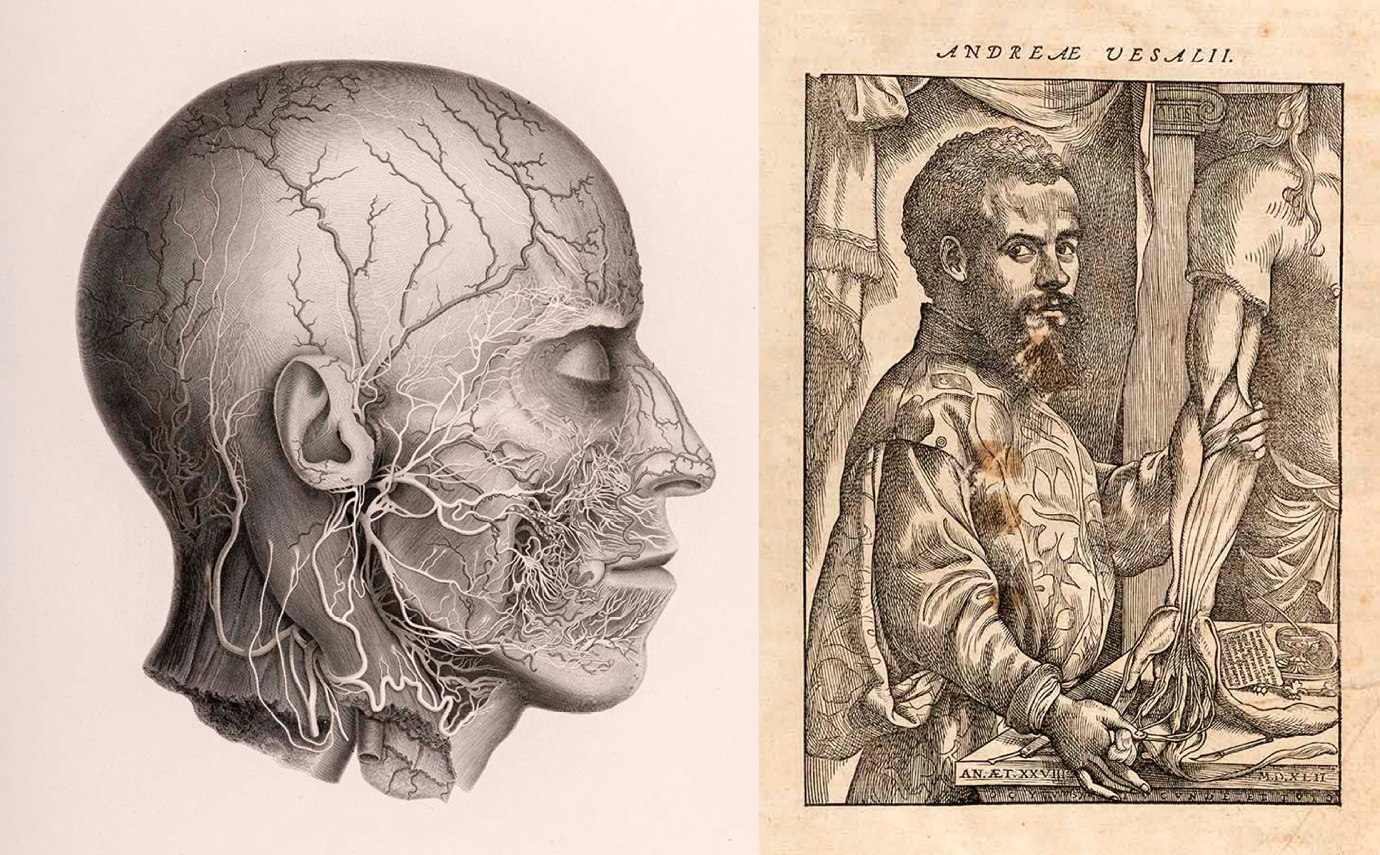In addition to being one of ancient Greece’s greatest philosophers, Aristotle also was the founding father of biology. His writings on it were the first that survive intact, says Thomas Brushart, professor and former chief of the hand surgery division in Johns Hopkins’ orthopaedics department, and a devoted rare book collector.
His oldest treasure, a 1492 translation of Aristotle’s De Animalibus (“About Animals”), is among 30 antiquarian volumes on display in the Welch Library’s second floor exhibition gallery. The show, also featuring large, explanatory posters, runs Oct. 19 through Jan. 31.
Entitled “Nerve: From Aristotle to Ramón Y Cajal,” the exhibit spans five centuries and features some of the most prized medical texts in the field of peripheral and cranial nerve studies. It demonstrates how knowledge of the peripheral nervous system, the network of motor and sensory nerves connecting the brain and spinal cord to the entire human body, has evolved over two millennia. It also fosters appreciation of the artistry in anatomical drawings.
“My goal is to not just display old books, but to bring them to life,” Brushart says. This exhibit is the first he’s ever mounted from his collection.
Drawn from some 300 antique items in his private library, Brushart’s exhibit is funded with a $65,000 Discovery Grant from The Johns Hopkins University that is designed to promote “intramural” collaboration among senior level faculty in its schools.
Contributing scholars include Christopher Cannon, Bloomberg Distinguished Professor of English and Classics; Corinne Sandone, professor and director of the Department of Art as Applied to Medicine; Norman Barker, professor and director of the Pathology Photography and Graphic Arts Laboratory; and Christine Ruggere, associate director of The Institute of the History of Medicine and curator of its historical collection.

Born in Washington, D.C., Brushart, 69, received his undergraduate and medical degrees at Harvard University. He moved to Baltimore for a hand surgery fellowship at Union Memorial Hospital’s Curtis Hand Center and joined its staff. Recruited to Johns Hopkins in 1994, he also has co-directed the Brachial Plexus Clinic at the Kennedy Krieger Institute.
The physician developed his fascination for antique books while working on a history project in high school, and began collecting in the early 1970s. As a hand surgeon and peripheral nerve expert, his collection consists primarily of texts central to his own research and practice.
Some of his rare books are not the best example of that volume, but a good one that is “useable” and can be referred to frequently without fear of harming it. “I don’t buy stuff that’s super fragile because I want to use it,” he says.
For instance, Brushart wrote a book several years ago called Nerve Repair. Each of the chapters begins with a historical introduction drawn from his collection. “I tried to put everything in context,” he says.
Highlights of this exhibit include the following works:
An Idea of a New Anatomy of the Brain, printed in 1811, is considered “the Magna Carta of neurology” because it provided the first proof of functional localization with the spinal roots. With a size no bigger than a large postcard, it was privately printed by Sir Charles Bell (1774–1842), the Scotch surgeon who first described what became known as Bell’s palsy, a temporary paralysis of facial muscles.
Microscopic Investigations on the Accordance in the Structure and Growth of Plants and Animals, published in 1839, was written by Theodor Schwann (1810–1882), a founder of cell biology for whom the Schwann cell is named.
An autographed, 1913 first edition of The Degeneration and Regeneration in the Nervous System, by Santiago Ramón y Cajal (1852–1934), a Nobel laureate celebrated for his seminal studies on the regeneration of nerves, will be displayed next to the draft copy of its first English translation, done in the late 1920s by Raoul May, a French neuroscientist who annotated and signed it.
“My goal has been to learn everything I can about the history of peripheral nerves,” Brushart says. “The books I purchase should add a chapter, or at least a few paragraphs, to that history. Ideally, the book also has its own history that makes it unique.”
